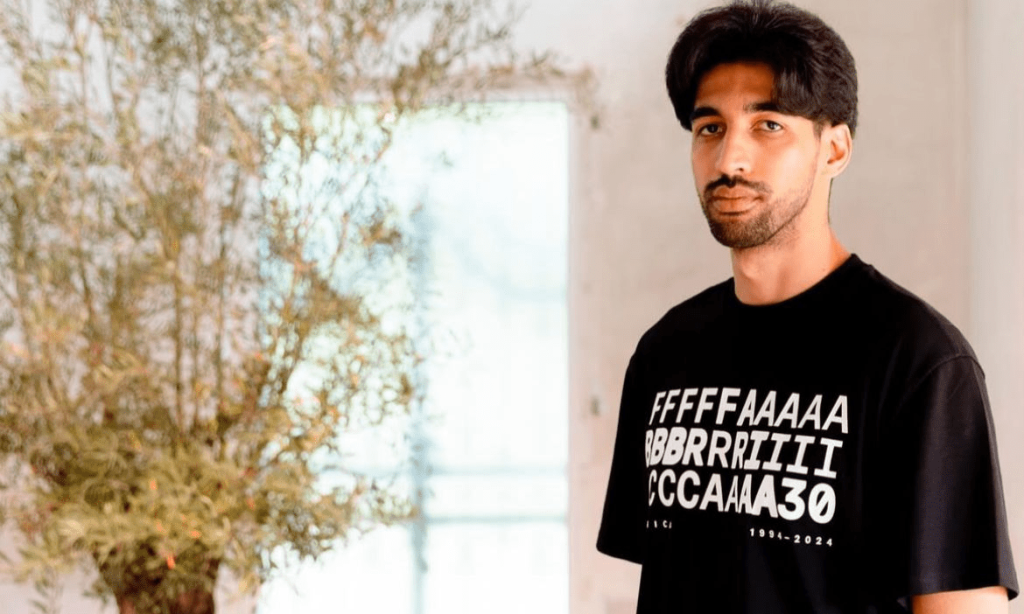In his latest installation, Ardna — Arabic for “our land” — Moroccan-born artist Mohammed El Hajoui brings together olive trees, ash, and keffiyeh patterns in a poignant gesture of resistance and regeneration.
Currently based in Italy, El Hajoui has consistently rooted his artistic practice in Arab identity.
Ardna, composed of an olive tree cradled in a carpet of ash, is no different. The ash forms the delicate geometric patterns of a keffiyeh, the symbol of Palestinian resistance, transforming the installation into a deeply intimate act.
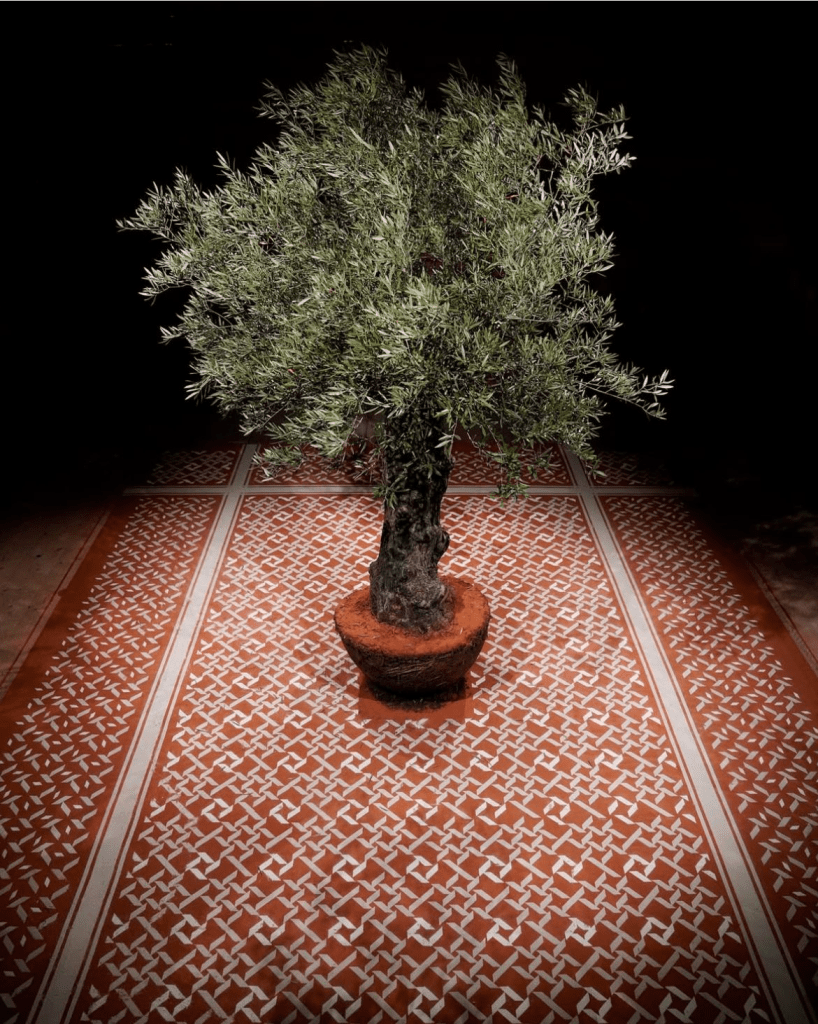

The Olive Tree: Political Icon or Personal Symbol?
The olive tree has long been tied to ideas of resistance in Palestine, where it has come to represent strength and survival in the face of a relentless genocide. That political resonance is at the core of Ardna.
But for El Hajoui, the olive tree also holds another layer of meaning, one that is deeply personal. “I was born surrounded by the scent of my mother’s hair,” he says, “which she loved to nourish with olive oil to keep it smooth and full of life.”
His family tended olive groves for years, and olives and oil were woven into the rhythms of daily life. “Olive oil, savored with warm homemade bread, and olives, always present on the table, become symbols of sharing—daily rituals that mark each meal and welcome relatives and friends with genuine warmth.”
In Ardna, the olive tree ties the personal and political together. It holds family memories and shared struggle, showing how deeply identity and resistance are rooted in the land.
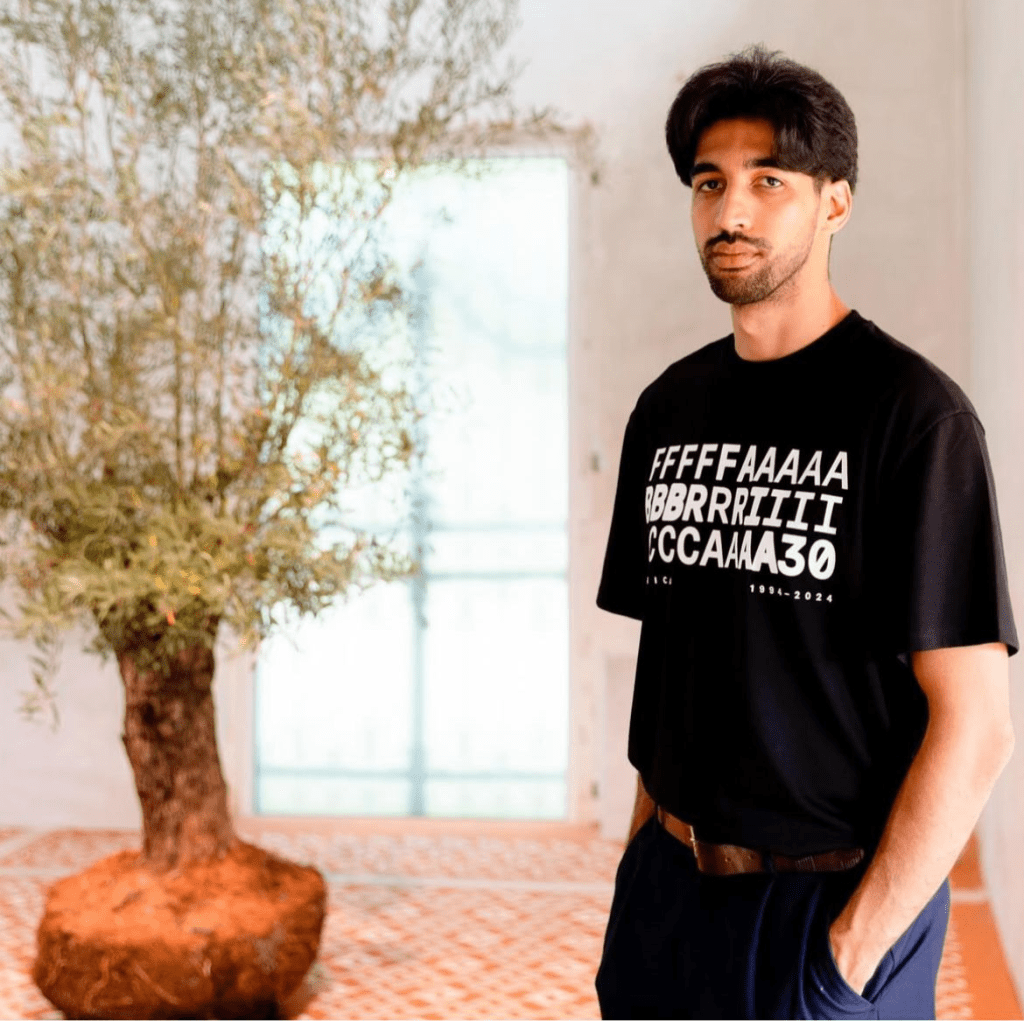

The Feeling Behind Ardna
El Hajoui sees Ardna as an exhibition unfolding in three parts: building the work, seeing the final form, and finally, the most meaningful part in his opinion, planting the olive tree using the same ash and soil.
“I hope that those who observe the work can grasp the true essence of the project — the dedication, the research, the attention to detail — while also sensing its fragility and strength.”
He also wants everyone to be able to connect with his art. “I want my works to speak not only to the art world, but also to those who feel distant from it-to the ‘atheists of art,’ as I like to call them—so that my work may belong to everyone, with no barriers or exclusive audiences.”
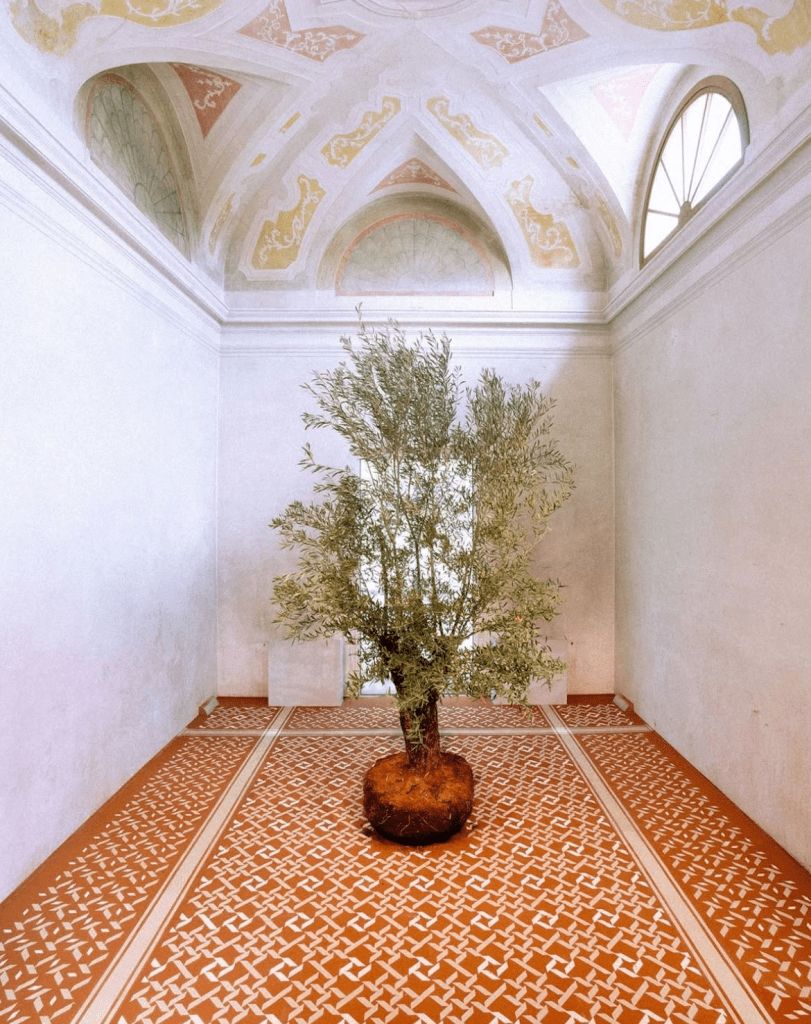

Ash—Why That Material?
Ash became part of El Hajoui’s work after a scene from the documentary 5 Broken Cameras stuck with him: a Palestinian man weeping over a burning olive tree.
“I imagined the olive tree’s leaves burning, breaking away, and slowly falling to the ground, forming a stylized pattern around the tree’s roots.” That moment sparked the idea for Ardna.
Inspired by a friend who used ash as fertilizer, “I like to think that the ash from that same olive tree could nourish it, helping it to survive,” he says. That idea sits at the core of the piece. El Hajoui created a keffiyeh pattern using stylized olive leaves, the grey tones echoing the rubble and destruction in Gaza.
What Does Fragility Mean in Art?
In a world that moves fast and forgets even faster, El Hajoui chooses materials that disappear. He used flour in an earlier piece called Radici, and with Ardna, he turned to ash.
He’s fascinated by how the work evolves with these kinds of materials.
To our shock, he revealed, “In all of my installations, visitors have walked over the piece as early as the first or second day after the exhibition opened.”
“They don’t always give it the care and attention it requires. I’ve often been asked to ‘fix it,’ to restore the marks left by careless steps. But I’ve always refused, because I don’t believe it’s ethically right.”
Every step, even if unintentional, alters the piece. “Every distraction, every moment of carelessness, leaves an irreversible mark. And because of that mistake, those who come afterwards can no longer experience the work in its original, intact form.”
That, to him, doesn’t take away from the art, if anything, “creating a work that is destined to disappear — ephemeral, limited in time — means giving it even deeper meaning.”
El Hajoui’s work doesn’t just ask to be seen, it asks to be treated with care. In its quiet decay, it confronts us with how easily art can be lost through neglect.
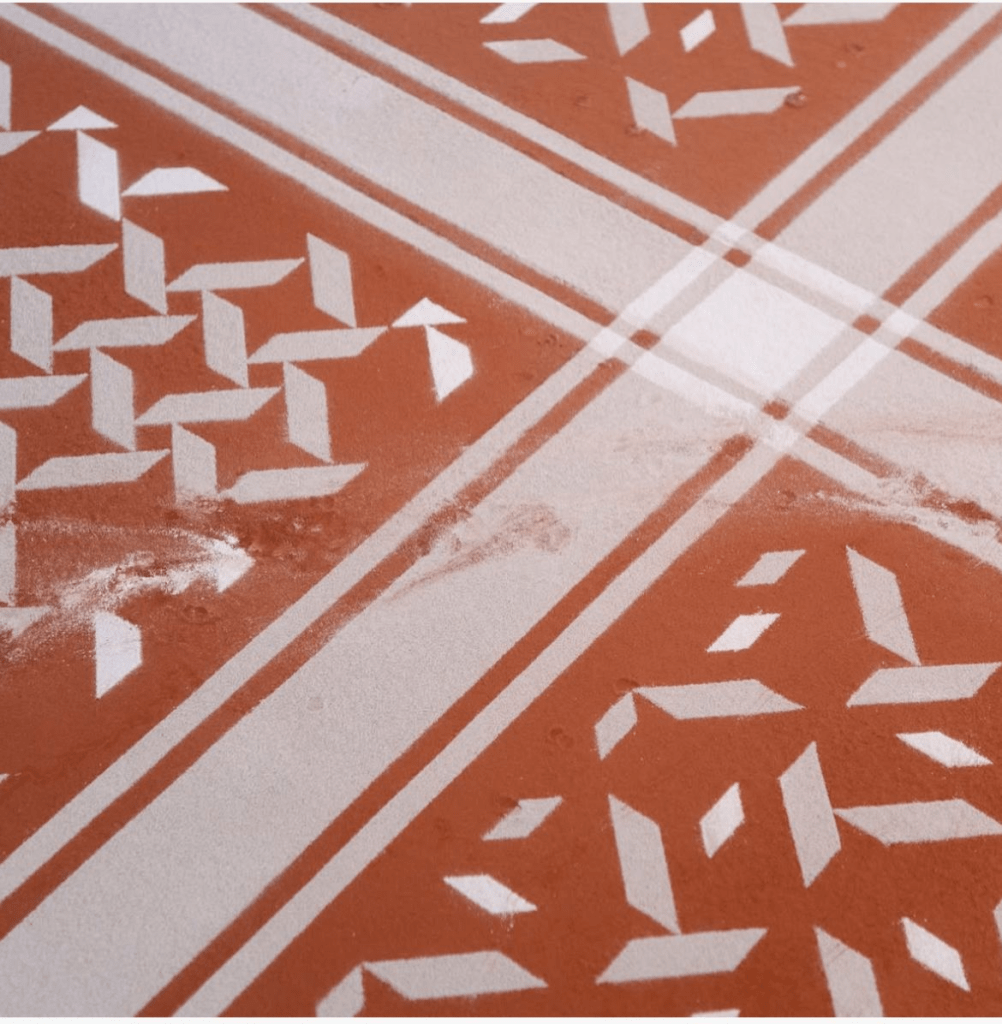

How the World Sees Ardna
The meaning of Ardna stays the same, but people react differently. Only one venue, Centrale Fies, openly acknowledged the political message. The other spaces “never publicly took a position on the issue.”
One exhibition was in a former church, and many visitors found a spiritual dimension to it that moved them to tears, “almost like a moment of worship”.
Another reaction he noted was at Centrale Fies. “The audience was struck by the fact that it was inside an enclosed space: it seemed as though the structure had been built specifically around the work.”
Whether seen as political, spiritual, or poetic, Ardna creates a space for reflection.
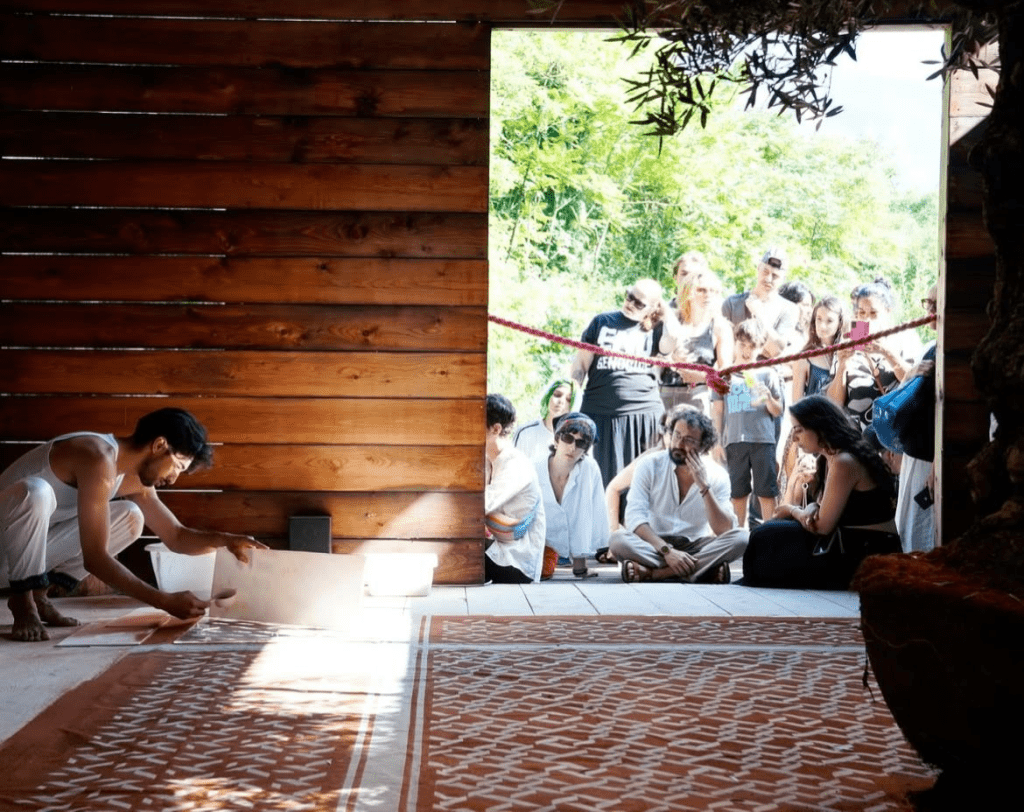

When Art Says the Unspeakable
In the face of censorship, Mohammed El Hajoui sees art as a quiet way to speak.
“I tried to bypass censorship by creating a project that could disguise itself with its aesthetic appearance, yet be deeply filled with content and meaning.”
Even when institutions didn’t want to make political statements, Ardna held its message.
“The installation helped me gain access to certain spaces and allowed me to speak, even in silence, about the serious situation in Palestine.”
Interviews, though, weren’t always reliable. One too many times, Mohammed El Hajoui’s words were filtered or changed.
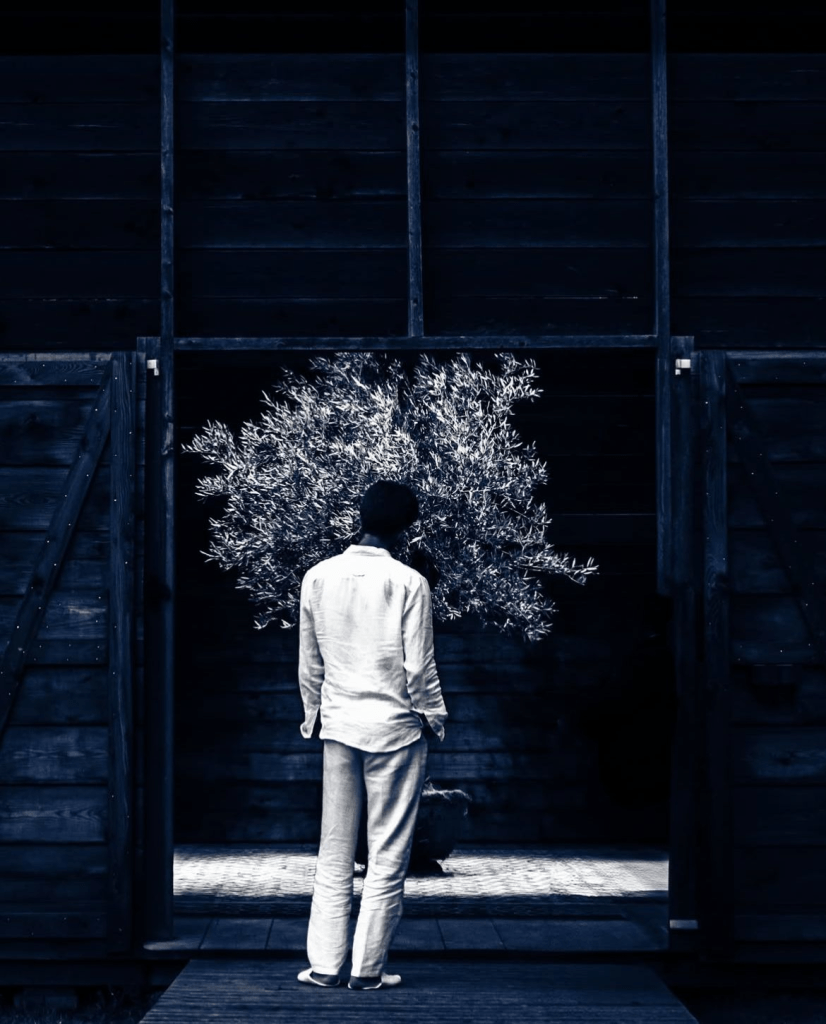

Sifting Ash as a Ritual: El Hajoui’s Meditative Process
The act of creating the art, slow, intentional, and meditative, is important for El Hajoui.
“When I create an art installation, the space transforms for me into a place of contemplation, where the audience is not only a spectator but can also carve out a moment of peace, tranquility, and serenity.”
This meditation is also partly spiritual, as he likes to listen to the Quran as he creates his patterns. He gives credit to the holy month of Ramadan for being able to develop this state of mind.
Ardna goes beyond the final image. The space of the installation becomes a space for reflection, for him and for those who walk through it. He also confessed that the process usually takes him into a moment of reflection on the devastating situation in Palestine.
Ardna, the Audiovisual: A Juxtaposition of Destruction and Restoration
In Ardna, the visual contrast is haunting yet hopeful. The artist places two timelines in direct conversation: the burning of an olive tree in 5 Broken Cameras (a 2011 documentary) and the peaceful act of planting his installation.
“My research begins with this brief excerpt from 5 Broken Cameras,” he explains. “I wanted to compare the two scenes in order to explain more concretely to people all the various phases of the work, and especially to demonstrate the true meaning of the piece.”
The clip he references is raw and visceral. You see the heartbreak and helplessness in the faces of Palestinian men, who bemoan the burning of the olive trees by the settlers.
“In the video clips of Ardna, I depict an almost opposite situation, as if it were the continuation of a story.”
Through this visual counter-narrative, the piece becomes a powerful statement of resilience and the possibility of regeneration despite trauma.
How Italy Shaped El Hajoui’s Relationship to His Moroccan Heritage
Growing up in Italy as a Moroccan child, Mohammed El Hajoui felt a deep sense of disconnection from his roots. “Everyone around me was different,” he recalls, “and there was often a strange perception of a child or teenager of Moroccan origin.”
Without Arab artistic references in his immediate surroundings, his cultural identity felt more like an absence than a foundation. But that changed as he grew up.
“It was during university that I began to study my cultural roots more deeply, developing a profound and visceral connection to them, and from that moment on, I never stopped exploring them.”
Today, this exploration has become central to his artistic language. “I feel I have a solid artistic identity,” he says with clarity, “and I try to highlight and celebrate it as much as possible in every exhibition.”
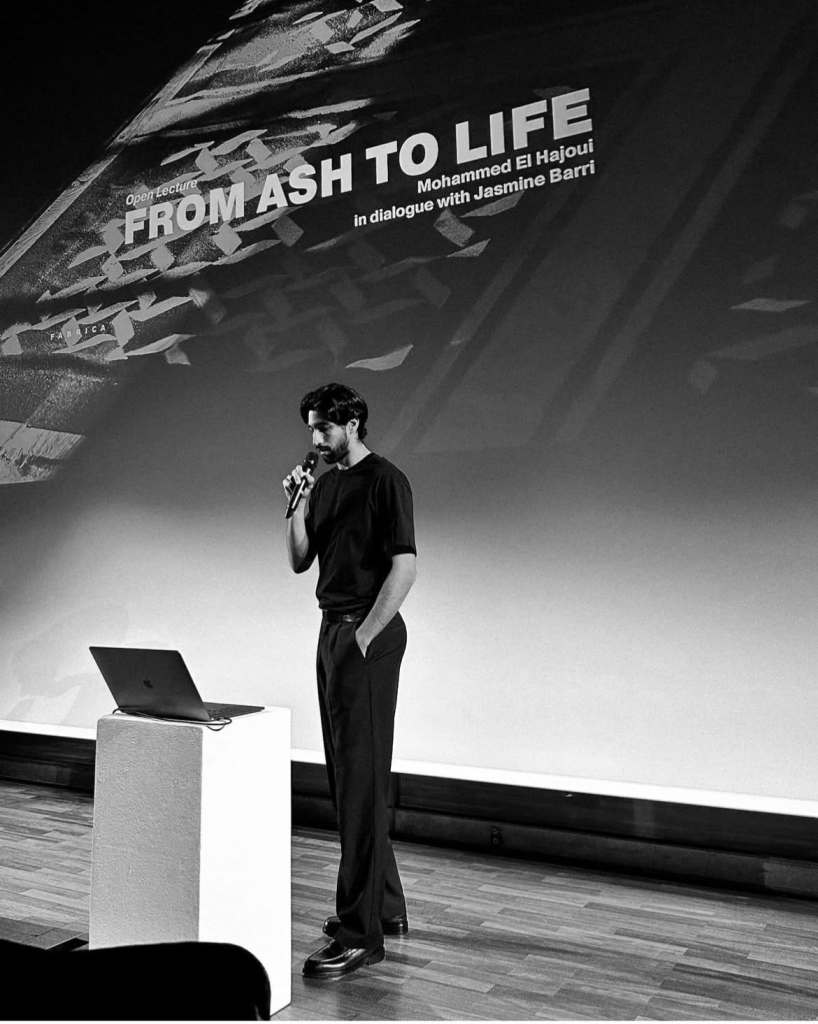

What’s Next for El Hajoui: Exploring Materials and Identity
“I would like to continue working with ephemeral and humble materials,” he shares, staying true to the poetic nature of his installations.
Ash has fully piqued his interest. He wants to delve more into it using it almost like clay to sculpt temporary forms, or drawing with ash powder on paper to explore new material textures. “It’s definitely another medium I want to keep exploring and developing.”
But the work isn’t only about material experimentation, it’s also about the cultural focus. “I want to better analyze my cultural background and translate it through my art in Italy,” he says. His goal is not just representation, but integration to normalize the Arab cultural identity within contemporary artistic spaces.
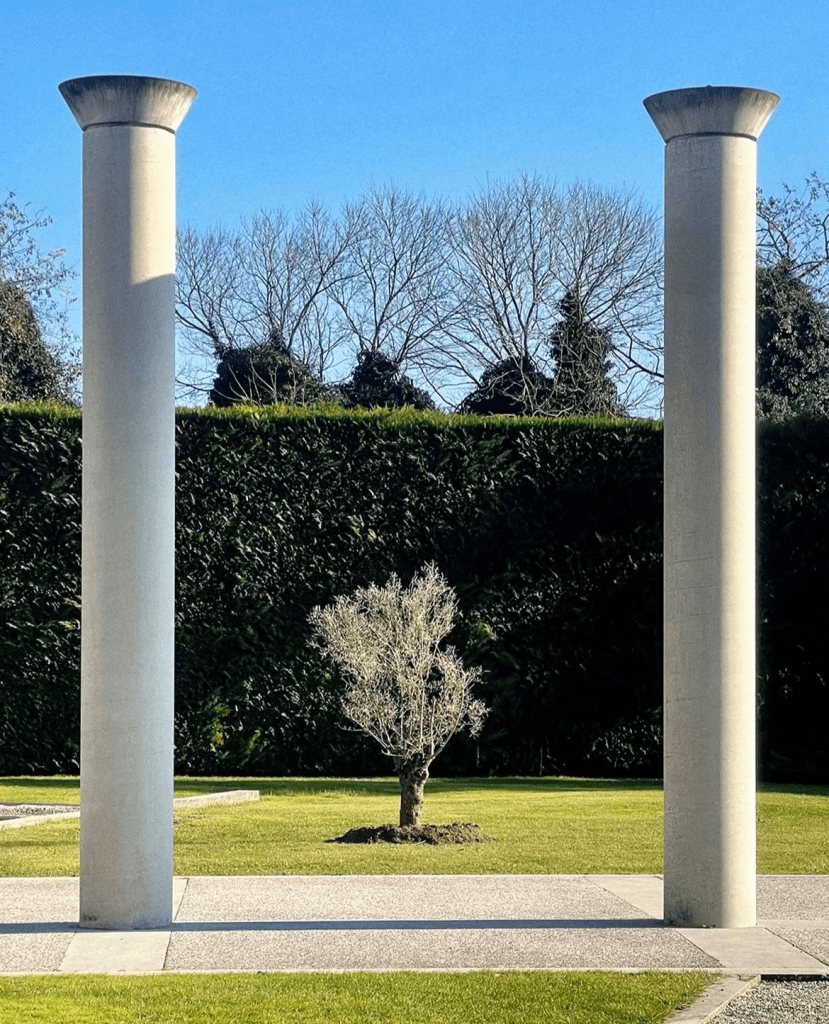

Through Ardna, Mohammed El Hajoui weaves together memory, resistance, and renewal using the quietest of materials. His ash-carpeted keffiyeh and rooted olive tree remind us that even in fragility, there is power, and that art can speak where words are silenced.
WE SAID THIS: Don’t Miss…Inside The ‘Eyes of Gaza’: An Exclusive Interview With Plestia Alaqad


